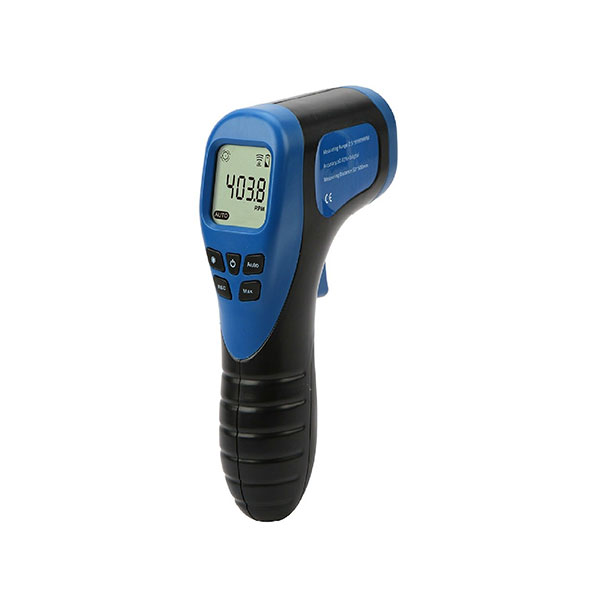Specialist Tips for Preserving and Calibrating Your Tachometer
Specialist Tips for Preserving and Calibrating Your Tachometer
Blog Article
The Value of a Tachometer in Keeping Track Of Engine Rate and Efficiency in Automotive Applications
In the world of automobile design, the tachometer stands as a crucial tool in the chauffeur's collection, providing a direct window into the inner workings of a car's engine. Past its feature as a simple scale of transformations per minute (RPM), the tachometer offers as a crucial device for lovers and specialists alike, using real-time insights right into engine performance and health and wellness.
Relevance of Monitoring Engine RPM
Monitoring engine RPM, or transformations per minute, is an important element of automotive upkeep and efficiency analysis. Engine RPM directly correlates with the rate at which the engine's crankshaft rotates, indicating exactly how swiftly the engine is running.
In addition, monitoring engine RPM is vital for performance evaluation in racing and high-performance automobiles. In recap, keeping track of engine RPM is not only important for detecting concerns however likewise for enhancing engine performance in various auto applications.

Benefits of Real-Time Information
In auto applications, real-time information plays a crucial role in giving instantaneous understandings into the efficiency and problem of the lorry. By continuously keeping an eye on numerous parameters such as engine rate, temperature level, gas consumption, and much more, real-time information offers numerous benefits that add to improved effectiveness and safety on the road.
One significant benefit of real-time data is its ability to alert chauffeurs and specialists to any abnormalities or concerns without delay. This aggressive method enables quick recognition of potential troubles, permitting timely interventions to stop more damages or failures. Furthermore, real-time data helps with efficiency optimization by offering immediate responses on driving behaviors and engine performance. Chauffeurs can adjust their behavior in real-time based on this information to accomplish better fuel economic situation and extend the life expectancy of their automobile.

Moreover, real-time information plays a vital function in modern-day vehicle diagnostics, allowing specialists to promptly diagnose and resolve breakdowns. This brings about lowered downtime, reduced upkeep costs, and ultimately, boosted total automobile integrity and long life (tachometer). By using the power of real-time data, automotive stakeholders can make enlightened choices that favorably influence both the performance and longevity of the vehicle
Influence On Gear Shifts
Reliable gear changes in automotive applications significantly affect general performance and driving experience. The tachometer plays an important duty in enhancing equipment shifts by offering real-time engine rate information to the driver. When approaching the redline on the tachometer, it signals the driver to upshift to avoid over-revving the engine and creating possible damages. On the other hand, downshifting at the right moment can aid keep the engine in its power band, making sure receptive velocity when needed.
In addition, the tachometer aids over here in attaining smoother equipment shifts, especially in hands-on transmissions. By keeping track of engine rate, motorists can carry out gear shifts at the optimum RPM range, minimizing jerking motions and lessening wear on the transmission components. This precision on duty changes not only improves driving convenience right here yet likewise adds to fuel efficiency.
Enhancing Fuel Efficiency
Given the crucial function the tachometer plays in optimizing equipment shifts for efficiency and engine wellness, it directly adds to optimizing gas effectiveness in automotive applications. By giving real-time feedback on engine rate, the tachometer helps drivers in keeping one of the most efficient RPM variety for fuel economic situation. When vehicle drivers continually monitor the tachometer and change their driving routines as necessary, they can prevent unnecessary fuel intake triggered by over-revving or lugging the engine.
In addition, the tachometer assists vehicle drivers determine the most fuel-efficient equipment to be in at any kind of given moment, stopping the engine from functioning harder than required. In conclusion, the tachometer offers as a useful tool in improving gas effectiveness by advertising optimal driving habits and determining areas for enhancement in the automobile's performance.

Optimizing Engine Durability
The tachometer's role in checking engine rate and efficiency is critical in guaranteeing the longevity of auto engines. Monitoring the tachometer enables chauffeurs to remain within discover here the advised RPM variety for their vehicle, protecting against unneeded strain on the engine and expanding its lifespan.

Conclusion
In final thought, the tachometer plays a vital duty in checking engine rate and performance in automobile applications. By supplying real-time information on RPM, it enables effective gear shifts, boosted gas efficiency, and optimized engine longevity. This tool is crucial for maintaining ideal engine performance and making certain the overall capability of an automobile.
Report this page